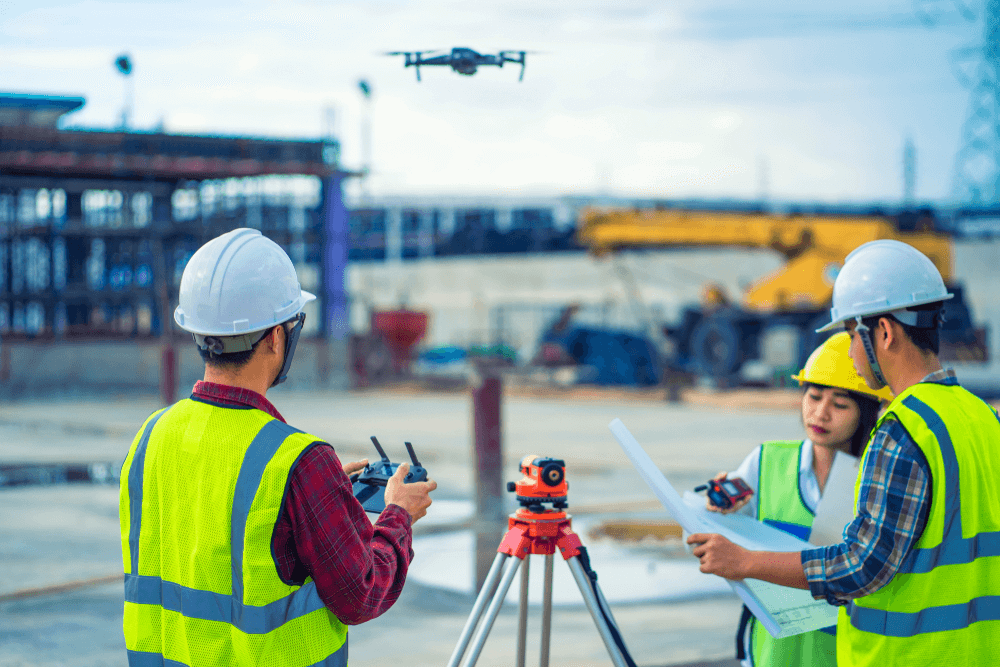Land surveying and mapping are essential tools that have been shaping our world for centuries. From ancient civilizations marking the boundaries of their territories to modern cities planning their infrastructures, surveying and mapping have been invaluable. In this blog, we’ll explore ten key benefits of land surveying and mapping that everyone should be aware of, from property owners to government officials.

1. Property Boundary Identification
One of the primary reasons for land surveying is to accurately identify and mark property boundaries. This is crucial for property owners to prevent boundary disputes and encroachments. A professional land surveyor uses a combination of historical records, measurements, and markers to establish precise property lines.
For instance, if you’re considering building a fence, a survey can ensure it stays well within your property boundaries, avoiding potential conflicts with neighbors.
2. Real Estate Transactions
When buying or selling real estate, knowing the exact dimensions and legal description of the property is essential. Land surveys provide this critical information, making the transaction smoother and more transparent. Additionally, lenders often require land surveys to approve mortgage loans, further emphasizing their importance in real estate transactions.
3. Construction and Development
In construction and development projects, land surveying plays a pivotal role. Surveyors help in site planning, ensuring buildings and infrastructure are constructed in the right locations. They provide topographic surveys, which detail the elevation and natural features of the land, helping architects and engineers design structures that are both safe and sustainable.
4. Infrastructure Planning
Cities and municipalities rely on land surveying and mapping to plan and manage their infrastructure. Surveyors provide data that helps in road construction, utility placement, and urban development. This data is crucial for efficient city planning, which can reduce costs and improve the quality of life for residents.
5. Floodplain Management
Understanding the topography and hydrology of an area is essential for managing floodplains and mitigating flood risks. Land surveyors and mappers contribute data that aids in creating accurate floodplain maps, allowing governments to implement better flood control measures and inform residents of potential risks.
6. Environmental Preservation
For environmentalists and conservationists, land surveying and mapping are invaluable tools. They help in monitoring and preserving natural habitats, tracking changes in landscapes, and identifying areas that need protection. This is particularly critical in the face of climate change and habitat loss.
7. Archaeological Research
Archaeologists rely on land surveying to locate and map historical sites. This is crucial for understanding our past, preserving cultural heritage, and even uncovering long-forgotten civilizations. Without accurate mapping, many historical sites might remain hidden.
8. Geospatial Data for Emergency Services
Land surveying and mapping data are instrumental in disaster management and emergency response. In the event of a natural disaster, accurate maps of the affected areas help emergency services plan their responses effectively. Moreover, these maps are invaluable for search and rescue operations.
9. Mining and Resource Exploration
Resource industries, such as mining and forestry, rely on land surveying for efficient resource management. Surveys help locate valuable resources, determine their quantity, and plan their extraction sustainably. Mapping is crucial for the logistics of these operations.
10. Legal Protection
Last but not least, land surveys are a form of legal protection. They provide a documented record of the property’s boundaries, which can be essential in legal disputes. They are often used as evidence in court to resolve property-related conflicts.
Conclusion:
In conclusion, land surveying and mapping are foundational to many aspects of our lives, from property ownership and construction to urban planning and environmental conservation. As technology advances, these practices evolve, becoming even more accurate and efficient. Therefore, recognizing the importance of land surveying and mapping is not just a matter of professional interest; it’s a crucial aspect of responsible land use and development. Whether you’re a homeowner, a business owner, or a government official, understanding these benefits can lead to better decision-making and more sustainable land use.
